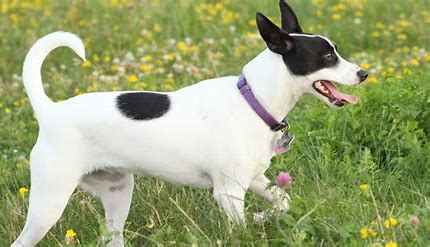The Rat Terrier is a smooth-coated, compact, and robust exterminator dog that is an American original. Teddy Roosevelt is credited with creating the breed name. RTs come in two size varieties and are happy-go-lucky, playful, and portable companions. Rat Terriers have a balanced, compact build that makes them robust but fashionable. Standard sizes range from over 13 inches to as high as 18 inches, while miniatures stand between 10 and 13 inches tall at the shoulder. The lustrous, silky coat is available in numerous pied patterns. These smoothly muscled exterminators are designed for the efficient mobility required for a long day’s work (pied, a word borrowed from the horseman’s lexicon, denotes “comparatively large patches of one or more colors in combination with white”).
Rat Terrier
Average sizes and life
expectancy of the breed.
Height
10-13 inches (miniature)
13-18 inches (standard)
Weight
10-25 pounds
Life Expectancy
12-18 years
Breed Traits & Characteristics
About the Breed

Owning a dog is not just a privilege; it’s a responsibility. They depend on us for, at minimum, food and shelter, and deserve much more. When you take a dog into your life, you need to understand the commitment that dog ownership entails.
 Health
Health
Rat Terriers are generally very healthy dogs, and responsible breeders screen their stock for health conditions such as hip dysplasia, patellar luxation (loose kneecaps), Legg-Calve-Perthes disease, and cardiac and eye disorders. All breeding stock is genetically tested by a responsible breeder with the goal of lowering the prevalence of health issues and finally eradicating them.
Recommended Health Tests From the National Breed Club:
- Patella Evaluation
- Hip Evaluation
- Legg-Calve-Perthe Radiographic
- Primary Lens Luxation(PLL)
- Cardiac Exam
- Ophthalmologist Evaluation
 Grooming
Grooming
 Exercise
Exercise
 Training
Training
 Nutrition
Nutrition
History
The Rat Terrier is a breed of terrier that has been developed specifically to hunt rats. A mouse infestation may make the difference between having enough grain to last the winter and going without food, therefore a good ratter was standard equipment on old farms. But because practical farmers wanted more from their dogs than just expertise, RTs also proved themselves as reliable watchdogs, henhouse guardians, and playmates for kids.





